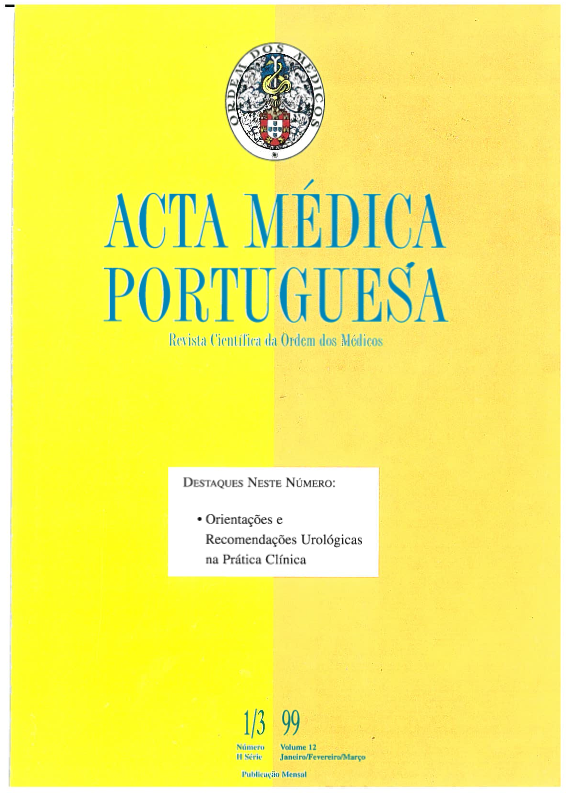Disfunção eréctil. Diagnóstico e tratamento.
DOI:
https://doi.org/10.20344/amp.2128Resumo
Erectile dysfunction is a health problem affecting more than 50% of men between 40 and 70 years old. Although several therapeutic options have become available in the last 20 years, only a small percentage of the patients, perhaps no more than 10%, seek treatment. The recent introduction of oral and intra-urethral medication has been highly publicised, therefore more patients will be involved in this new wave of enthusiasm for non-invasive options. We are challenged to develop new options as to how to present these treatments to our patients. Traditionally the diagnosis of erectile dysfunction is based on a comprehensive evaluation regarding aetiology, including family and sexual history, physical examination, blood tests, pharmacological testing with vasoactive drugs and Doppler study of the penile arteries. Other studies, such as Rigiscan, corpus cavernosum electromyography, cavernosometry, cavernosography and penile angiography should be performed when indicated. With regard to treatment, penile intracavernosal injection remains the best nonsurgical treatment. Application of a vacuum device and penile prosthesis implantation are also reliable therapeutic options. Only a limited number of patients are suitable for arterial revascularization or penile venous surgery. However, in the near future, we will have to face the requests of our patients for an oral or topical prescription without concern for the cause of erectile dysfunction. The results of these new therapies on organic impotence are not as exciting, but warrant further studies.Downloads
Downloads
Como Citar
Edição
Secção
Licença
Todos os artigos publicados na AMP são de acesso aberto e cumprem os requisitos das agências de financiamento ou instituições académicas. Relativamente à utilização por terceiros a AMP rege-se pelos termos da licença Creative Commons ‘Atribuição – Uso Não-Comercial – (CC-BY-NC)’.
É da responsabilidade do autor obter permissão para reproduzir figuras, tabelas, etc., de outras publicações. Após a aceitação de um artigo, os autores serão convidados a preencher uma “Declaração de Responsabilidade Autoral e Partilha de Direitos de Autor “(http://www.actamedicaportuguesa.com/info/AMP-NormasPublicacao.pdf) e a “Declaração de Potenciais Conflitos de Interesse” (http://www.icmje.org/conflicts-of-interest) do ICMJE. Será enviado um e-mail ao autor correspondente, confirmando a receção do manuscrito.
Após a publicação, os autores ficam autorizados a disponibilizar os seus artigos em repositórios das suas instituições de origem, desde que mencionem sempre onde foram publicados e de acordo com a licença Creative Commons









